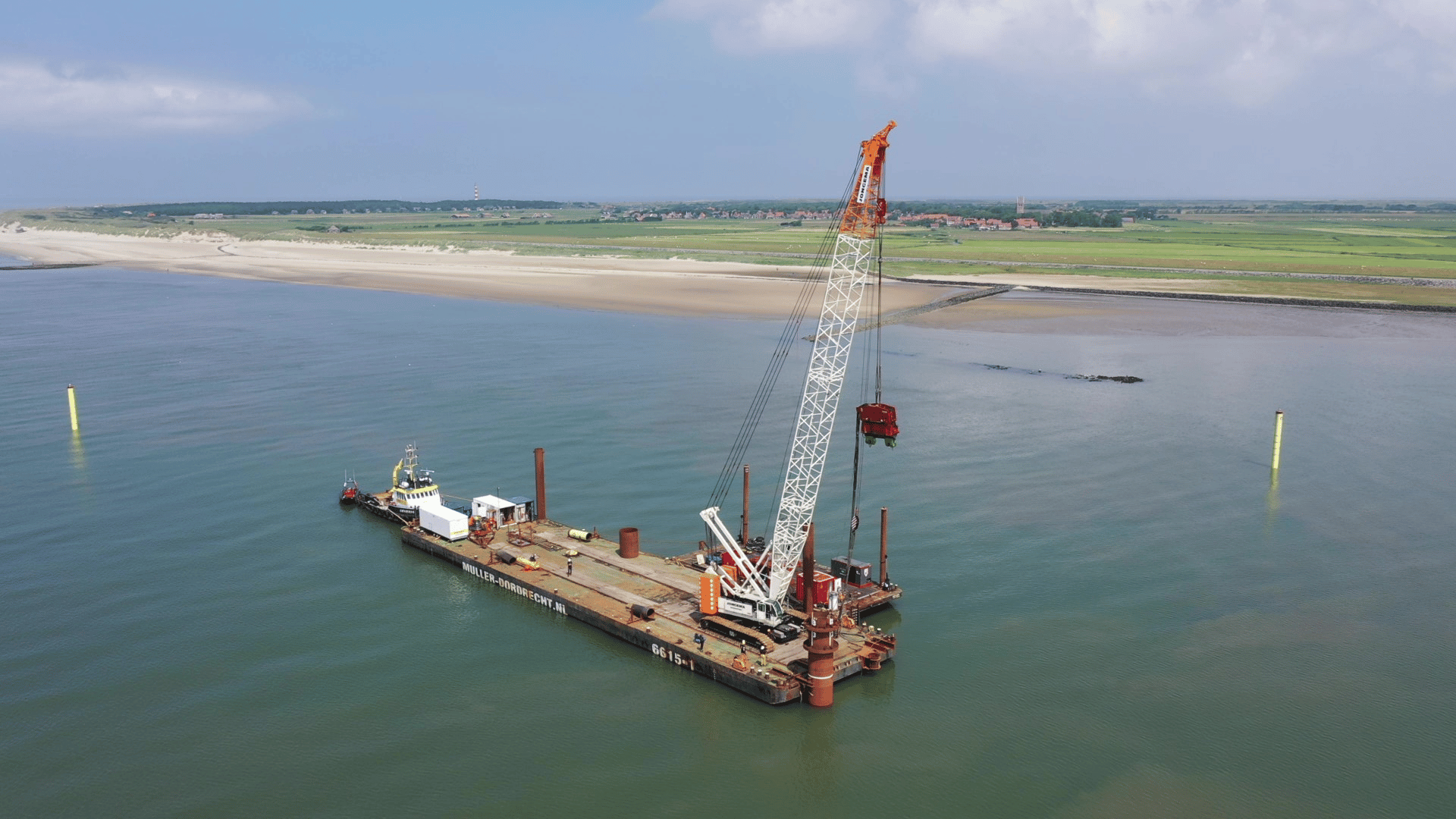
Press release – Realisation TidalKite test site at Ameland
Press release – Realisation TidalKite test site at Ameland
The Dutch company SeaQurrent® is developing an innovative sustainable tidal energy convertor, the TidalKite™. After several years and various scale model tests – at MARIN and in the Wadden Sea – a start has now been made with the full-scale demonstration of the TidalKite. Last week, the Borndiep test location was set up and now the grid connection to Ameland, a Dutch Wadden Island, is being realised.
How does the TidalKite work?
The TidalKite underwater kite has a simple yet robust design and is packed with smart electronics and software. The TidalKite is anchored to a monopile in the seabed with a high-tech tether and flies underwater across the current. The traction force generated by the kite drives a hydromotor, which in turn drives a generator, generating green electricity. TidalKite consists of several rows of wings that are placed one behind the other, making it able to cover a large surface area in one movement and thus to ‘3D-harvest’ the largest possible amount of energy. The high energy yield makes the TidalKite ideally suited for the relatively low velocity currents in the stream channels between the Wadden Islands and in many locations worldwide.
TidalKite is safe for marine life and seabed
Shaping the energy transition in a good balance with nature is essential for preserving the unique Wadden Sea (Natura 2000 habitat, UNESCO World Heritage area). TidalKite is designed in such a way that it works in an ecologically responsible way. Research and observations in previous tests in the Wadden Sea, conducted by the University of Groningen and by ecologists, confirm this.
Benefits TidalKite and tidal energy
Tidal electricity is predictable and available daily. It is an important addition to the electricity production from solar and wind and can be efficiently integrated into the existing electricity grid. In this way, particularly the limited electricity grid on the Wadden Islands can be used optimally and the infrastructure (‘Wadcables’) to the mainland can be restricted. The TidalKite can be placed near shore. This limits the length of the required electricity cables. In addition, installation and maintenance of the TidalKite system is relatively easy and does not require specialised, expensive vessels. One TidalKite produces a lot of electricity in relation to its weight and can be perfectly optimized for the (almost) constant flow conditions in the flow channels. All of this has a positive effect on the cost of the generated electricity. The TidalKite contributes to sustainability without taking up scarce land area. It functions completely underwater, so that the unique, wide landscape and the attractiveness of the Wadden Sea area is preserved.
Getijdencentrale Waddenzee (Tidal Power Plant Wadden Sea)
One TidalKite generates enough electricity to supply an equivalent of 700 Dutch households with green energy for a year. TidalKites in the flow channels between the Wadden Islands can provide 70% of the total electricity consumption of the Wadden islands and 20% of the households in the Wadden Coast municipalities. Getijdencentrale Waddenzee is established by SeaQurrent to make the islands and Wadden coast municipalities more sustainable by collaborating with local energy cooperatives, strongly encouraging co-ownership and supplying electricity to residents through local energy cooperatives. Living with and from what the Wadden Sea has to offer, suits life on an island and in the coastal region. Producing sustainable energy from local tidal currents is therefore a logical next step in the regional energy transition and a first step to introduce the TidalKite to the market.
Who is behind the TidalKite?
The TidalKite is being developed by SeaQurrent in collaboration with its partners. The demonstration at Ameland is financially supported by the Waddenfonds.
